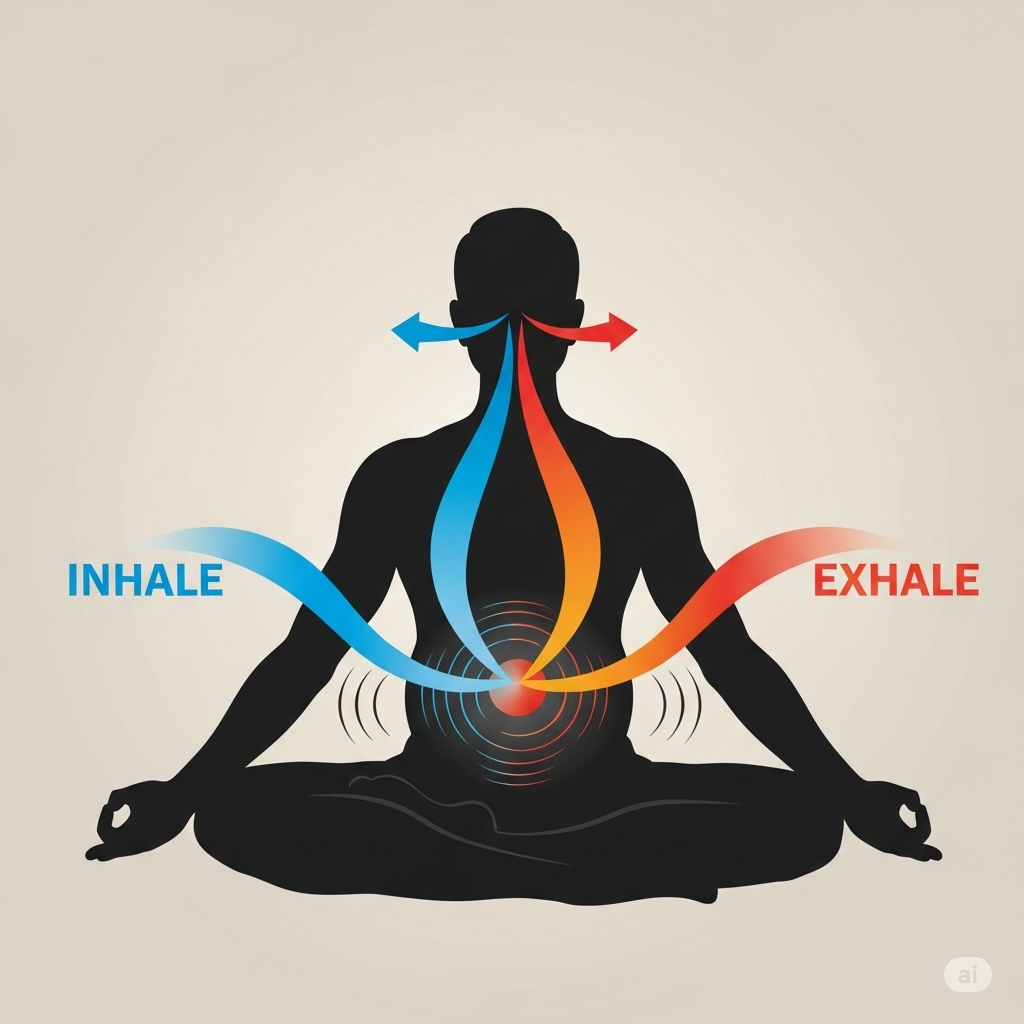School of Yoga explains the bhastrikā (bellows) prāṇāyāma technique
In bhastrikā-prāṇāyāma, the practitioner rapidly inhales and exhales using the diaphragm only.
Preparing for the bhastrikā prāṇāyāma
- First, sit comfortably in padmāsana, sukhāsana, or vajrāsana.Keep back erect.
- Keeping the mouth closed, let the tongue touch the top of the palate to close the circuit of prāṇa flow.
- Also, place your hands in the chin–mudra or chinmaya-mudra.
- Now breathing in through the nostril, draw the diaphragm down rapidly.
- Lastly, at the end of inhalation, exhale rapidly, thus pushing the air out vigorously.
- Repeat 5 to 10 times to a maximum of 2 sittings.
- Breathe normally, and relax.
What are the benefits of this prāṇāyāma technique?
- Firstly, this prāṇāyāma strengthens the upper respiratory tract. It also cleans out the mucosa along the track. The discharge of waste helps maintain the body temperature. This results in homeostasis.
- Additionally, the rapid movement of air also strengthens the trachea and lungs. Consequently, there is activation of the stagnant alveoli, resulting in improved lung function.
- Bhastrikā helps in preventing cold.
- Also, the rapid movement of air increases the volumetric efficiency of the lungs and heart function.
- Lastly, this breathing strengthens the functioning of the thoracic nerves. This also helps control the functioning of the heart and lungs.
Hatha Yoga Pradeepika on bhastrikā (Chapter 2, verses 59 to 67)
Bhastrikā– It is ideal to sit placing the feet on the opposite thighs, in the padmāsana – named the destroyer of all sins.
Assuming a balanced padmāsana and an erect body, the intelligent practitioner should exhale through the nostrils.
It should then be inhaled rapidly with force until there is an experience of resound in the heart, throat, upto the skull.
Next, it should be expelled repeatedly and filled again and again like a blacksmith using his bellows.
In the same manner, he should move the prana within the body and when experiencing fatigue, inhale using the right (piṅgalā-nāḍī) nostril.
As soon as the lungs are filled quickly with air, the right nostril should be closed with the ring finger and kept confined.
Having performed kumbhaka properly, it should be expelled through the left nostril. This destroys vata (air), pitta (bile) and kapha (phlegm) and increases gastric fires.
The kundalini is quickly aroused; pleasant, purifying, and beneficial. Any phlegm and other impurities which may be accumulated at the entrance to the brahma-nāḍī are destroyed.
Bhastrikā should be performed plentifully, for it breaks the 3 knots that are firmly placed on the suṣumṇā-nāḍi. (brahma-granthi in the anāhata, vishnu-granthi in the viśuddhi and rudra-granthi in the ājñā )


